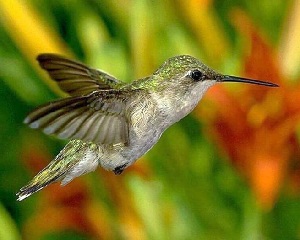 Camagüey archipelago, the largest group of islets surrounding the island of Cuba, stretches some 465 kilometers along the northern coast of the central region of the country.
Camagüey archipelago, the largest group of islets surrounding the island of Cuba, stretches some 465 kilometers along the northern coast of the central region of the country.
The string of keys endowed with natural beauty and parallel to the coast was named Jardines del Rey by Diego Velázquez in the early sixteenth century, in honor of the then King of Spain, Ferdinand the Catholic.
Covered with woodland, predominantly small trees and mangroves, and over 40 kilometers of beaches, many still untouched, the Coco, Guillermo, Paredón Grande, Antón Chico and Media Luna keys from part of the Buenavista Biosphere Reserve.
This small islands bathed by the Atlantic Ocean are home to over 200 species of bird, of 14 different types, including migratory, terrestrial and endemic varieties, representing huge potential for nature tourism in the area.
To protect these natural treasures, the Center for Costal Ecosystems Research (CIEC), has been responsible for the study and preservation of the biodiversity of the region since 1991, through monitoring and the implementation of management plans.
One of the focuses of the multidisciplinary team is the research, protection and conservation of birds across this region.
The keys are permanent or temporary shelters for numerous species of birds, both from the Cuban territory and those from distant lands, who arrive in search of a milder climate.
To date 234 varieties have been recorded here, representing over 63 percent of the total number registered on the island, of which a significant amount are migratory, due to the existence of a major international corridor in the area.
Due to its position in the Gulf of Mexico, these natural areas are considered vital for migratory birds, which not only reside here throughout winter, but also pass through on short stays before heading to the south of the continent.
Other migratory species, such as the piping plover and the thick-billed vireo, have formed permanent communities on Cayo Paredón Grande, finding adequate conditions for breeding and feeding.
According to biologist Antonio García, this is the only place in Cuba where these two species of Caribbean bird exist, while north of Coco, Guillermo and Paredón keys, is the most important nesting site of seagulls in the Caribbean, especially the Galician varieties and the sooty tern.
Cayo Coco, home to some of the most diverse bird species in Cuba, stands out for its large colony of pink flamingos, that “ugly bird in detail yet so persistently beautiful” as described by the famous U.S. writer Ernest Hemingway.
The key is home to some endemic jewels of the island such as the Zapata sparrow, the Cuban tody, the Cuban gnatcatcher, the green woodpecker, the Oriente warbler, the Bahama mockingbird and the common black-hawk, among others.
Belonging to Ciego de Ávila’s Great Northern Wetland, there are also populations of white ibis or “coco” living here, the long-limbed bird which gave the key its name; as well as neotropic cormorants, parakeets, bullfinches, Greater Antillean grackles, Cuban emerald hummingbirds, and many more.
The West Indian, green and northern flicker woodpecker varieties live throughout the keys, building their nests in the 16 specimens of Royal Palm (Cuba’s national tree) that exist here, which also serve as refuges for 12 other types of bird, including the Cuban pygmy and stygian owls.
García explained that currently studies are focused on the thick-billed vireo, the Zapata sparrow and the Bahama mockingbird, as these are endangered if their natural habitat is not protected.
The natural attractions, including beaches with clear blue waters and fine sand, led to development of the Jardines del Rey resort area in the region some 20 years ago, among the most important in the country.
This is enough motivation for CIEC specialists to constantly undertake environmental monitoring in the area, with the aim of studying trends and observing the reaction of birds to increased tourism.
The keys to the north of the province of Ciego de Ávila, 430 kilometers east of Havana, are included each year in the Caribbean Endemic Bird Festival, taking place in the month of May, to celebrate the International Day for Biological Diversity.
The event promotes knowledge of the native birds of the area to create social awareness about the need to protect these, given that more than 26 percent of the species which inhabit the Caribbean are endemic.
Thousands of domestic and foreign tourists enjoy bird watching along special trails throughout Jardines del Rey each year, hence the importance of preserving the environment in which these specimens that beautify the landscape with their songs and colorful plumage live.
(Diario Granma)